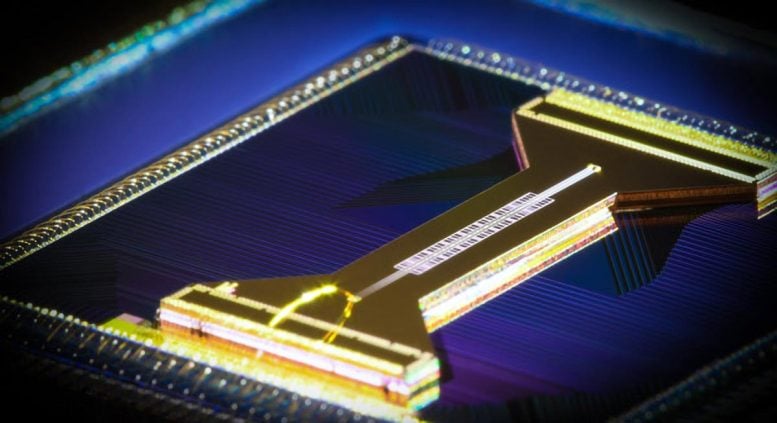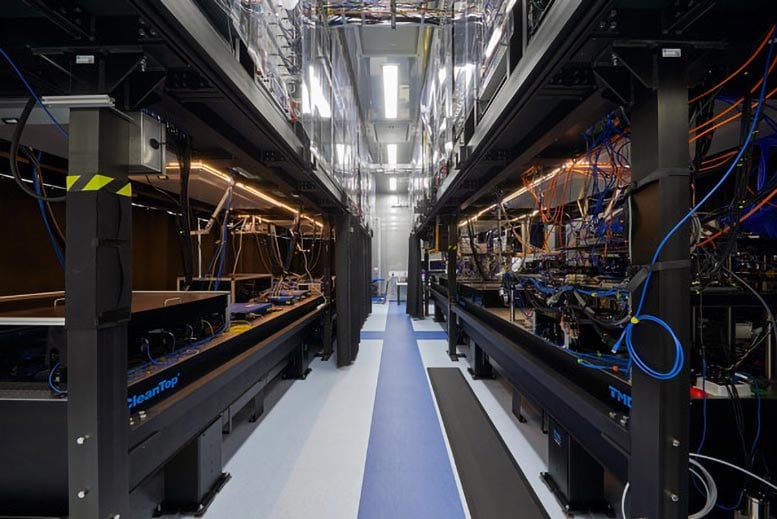
The difference between traditional computers and quantum computers is narrowing in their ability to simulate the scrambling of quantum information.
A team of four researchers at RIKEN has successfully used two small quantum computers to simulate quantum information scrambling, a key process in quantum information science. Their success highlights one of the promising applications that future quantum computers could provide.
Although still at an early stage of development, quantum computers are starting to find practical uses. As the technology advances, they are expected to transform computing in profound ways.
Simulating information scrambling
One promising use for quantum computers is modeling the scrambling of quantum information, a fundamental process where information disperses throughout a quantum system, from exotic materials like strange metals to extreme environments such as black holes.
When information is first encoded into one region of a quantum system, it gradually becomes diluted through different interactions until it is distributed across the entire system.
Although the information is still present, reconstructing it becomes far more difficult because it requires access to the whole system. Black holes represent the most extreme example of this process, acting as the ultimate scramblers of quantum information.

Gaining a deeper understanding of how scrambling works is essential for tackling some of the most profound questions in quantum physics.
“Quantum-information scrambling is of interest to us because we can use it to do some additional calculations, such as statistical physics calculations,” says Kazuhiro Seki of the RIKEN Center for Quantum Computing (RQC).
One way to study quantum information scrambling is to perform simulations, which is where quantum computers can help, since they are better suited for such simulations than conventional computers.
Using 20-qubit quantum computers
Now, Seki and Seiji Yunoki, also of RQC, and two co-workers, have used two quantum computers with 20 qubits—the quantum equivalent of bits—to simulate quantum-information scrambling circuits.
For the simulation, the researchers used state-of-the-art quantum computers via the cloud, which are based on qubits formed from trapped ions. They used the quantum computers to perform three simulations, which included creating a scrambled state and using it to perform quantum statistical mechanical calculations.
While a powerful conventional computer could have been used to perform the simulation, the complexity of simulations is approaching the realm where quantum computers will be indispensable for such calculations.
“We only used 20 qubits to conduct the simulations in this study,” says Yunoki. “If we can use more than 50 qubits to perform similar calculations, it may be too difficult for a classical computer to handle.”
A 20-qubit, trapped-ion quantum computer was installed at RIKEN in February 2025. “We’re hoping to upgrade it in the next couple of years, so that it will have around 50 qubits,” Yunoki notes.
Reference: “Simulating Floquet scrambling circuits on trapped-ion quantum computers” by Kazuhiro Seki, Yuta Kikuchi, Tomoya Hayata and Seiji Yunoki, 10 April 2025, Physical Review Research.
DOI: 10.1103/PhysRevResearch.7.023032
Never miss a breakthrough: Join the SciTechDaily newsletter.
2 Comments
Very interesting and informative
Except we don’t have access to the entire system in the case of a mathematical black hole, so scrambled quantum information is irretrievable, theoretically.